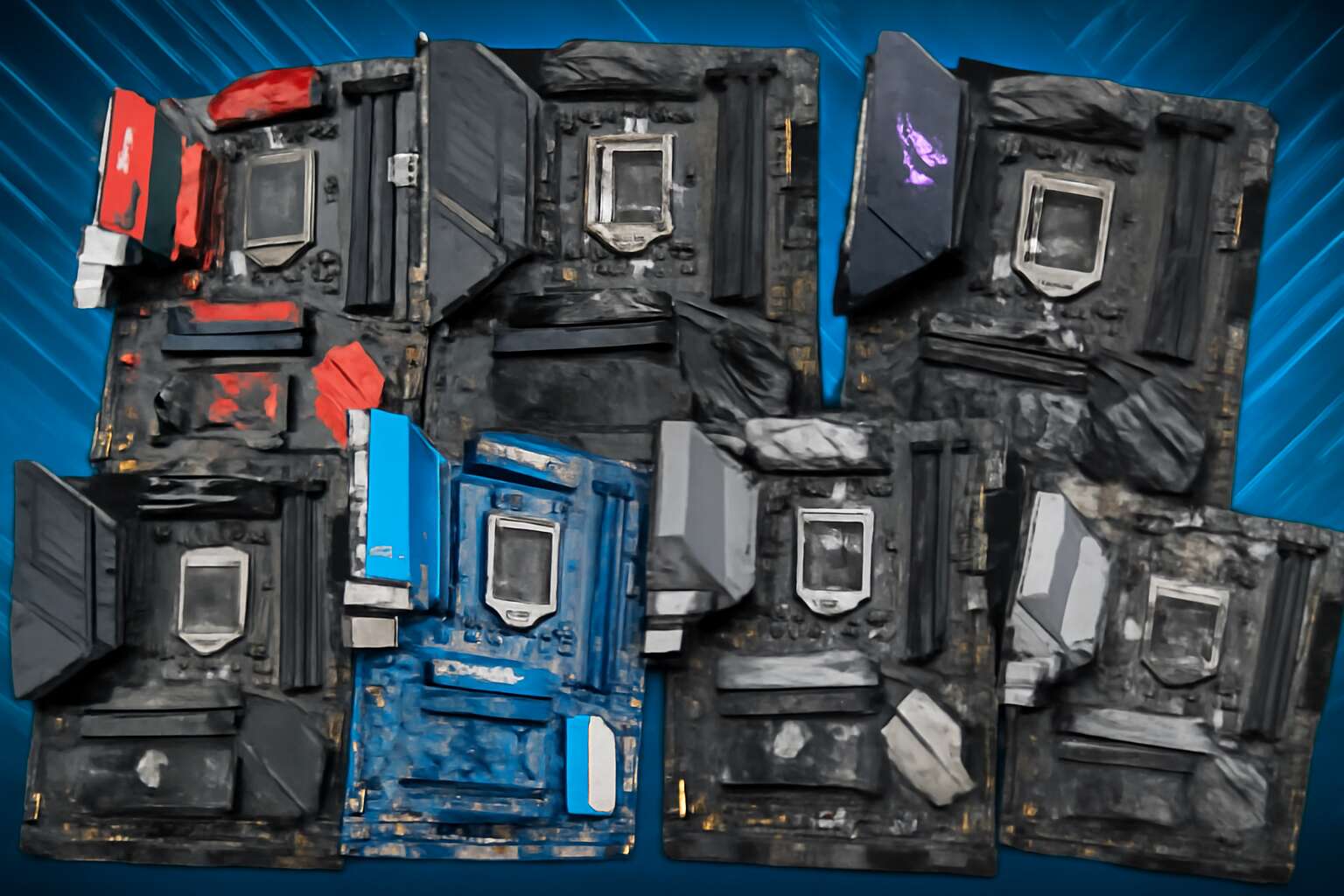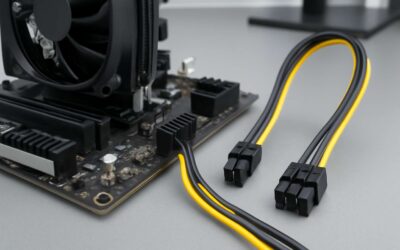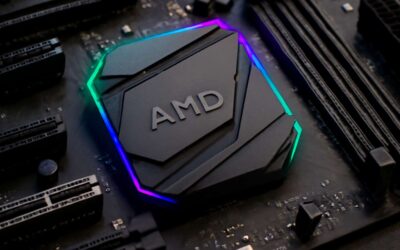Overview of the Global Motherboard Manufacturing Industry
History and Evolution of Motherboard Manufacturing
Since the dawn of personal computing, the motherboard manufacturing industry has undergone a remarkable transformation, evolving from a handful of pioneering companies into a sprawling global network of innovators. In the early days, only a few manufacturers like ASUS, Gigabyte, and MSI dominated the scene, crafting the foundational architecture for early PCs. Today, the landscape is far more complex, with dozens of companies vying for a share of the market, each pushing the boundaries of technology and design.
Understanding how many motherboard manufacturers are there becomes a fascinating journey through technological progress and market diversification. Some manufacturers specialize in niche segments such as gaming or enterprise solutions, while others focus on budget-friendly options for everyday consumers. This diversity fuels competition and innovation, making the industry a vibrant tapestry of ingenuity and craftsmanship.
- Major global players like ASUS, MSI, and Gigabyte
- Emerging brands from South Korea, Taiwan, and China
- Niche manufacturers focusing on specialized applications
Current Industry Landscape
Stepping into the world of motherboard manufacturing, it’s clear that the industry isn’t just a quiet corner of tech anymore—it’s a bustling metropolis of innovation. Currently, there are over 50 prominent manufacturers worldwide, each vying for a slice of the pie. This diversity makes the landscape more vibrant than a motherboard with RGB lighting! Major global players like ASUS, MSI, and Gigabyte still dominate the scene, but emerging brands from South Korea, Taiwan, and China are shaking things up in a big way.
For those wondering how many motherboard manufacturers are there, the answer isn’t straightforward—it’s a constantly shifting mosaic. Some companies focus on niche markets such as gaming or enterprise solutions, while others cater to budget-conscious consumers who just want their PC to boot. This proliferation of manufacturers fuels fierce competition and sparks rapid technological advancements, ensuring that the industry remains as dynamic as ever. Whether you’re after cutting-edge features or a dependable budget option, the options are plentiful and ever-evolving.
Key Players and Market Share
Understanding the global motherboard manufacturing industry reveals a fascinating mosaic of innovation and fierce competition. At its core, the industry is dominated by a handful of key players whose market share defines the landscape. These companies, such as ASUS, MSI, and Gigabyte, have established themselves as household names, shaping the standards for quality and performance. However, the industry isn’t static—new entrants from South Korea, Taiwan, and China continually challenge the status quo, injecting fresh ideas and technological advancements into the mix.
In terms of market share, the top three manufacturers hold a significant portion of the global pie, but the landscape is dotted with dozens of smaller, specialized firms. Some focus on high-end gaming motherboards, while others cater to budget-conscious consumers or enterprise solutions. To grasp how many motherboard manufacturers are there, one must appreciate this dynamic ecosystem, where market share can shift rapidly as innovation and regional strategies evolve.
- ASUS
- MSI
- Gigabyte
Altogether, there are over 50 prominent motherboard manufacturers worldwide, each contributing to a vibrant and constantly shifting market. This diversity ensures consumers are spoiled for choice, whether they seek cutting-edge features or reliable, budget-friendly options. The question of how many motherboard manufacturers are there continues to evolve, reflecting the industry’s resilience and relentless pursuit of progress.
Leading Motherboard Manufacturers Worldwide
Major International Brands
Across the global tech landscape, a handful of major international brands dominate the scene when it comes to motherboard manufacturing. These companies, often celebrated for their innovation and reliability, shape the backbone of countless systems worldwide. Their reputation is built on decades of engineering excellence and a keen understanding of consumer needs, making them household names among PC enthusiasts and professionals alike.
Among the leading motherboard manufacturers worldwide, a few stand out due to their extensive product ranges and technological advancements. Companies such as ASUS, MSI, Gigabyte, and ASRock have established themselves as the pillars of quality and performance. These brands continuously push the envelope, integrating cutting-edge features that cater to gamers, content creators, and enterprise users. Curious about how many motherboard manufacturers are there that truly make a mark? The answer is relatively concise but impactful, with these key players accounting for the majority of the market share.
For those eager to explore, here is an overview of the most prominent brands:
- ASUS
- MSI
- Gigabyte
- ASRock
While numerous smaller manufacturers exist, they often serve niche markets or specific regions. Still, when considering how many motherboard manufacturers are there with significant influence, these four brands collectively define the industry’s standard-bearers, ensuring quality and innovation remain at the forefront of their endeavors.
Notable Regional Brands
Across the global tech landscape, a handful of manufacturers command the attention of enthusiasts and professionals alike. These brands are not just building motherboards; they are shaping the future of computing itself. When pondering how many motherboard manufacturers are there, the answer often surprises many—just a select few truly dominate the scene. Their influence extends beyond mere market share, defining the standards for innovation, durability, and performance.
Leading the charge are regional giants that have carved out their own niche within the industry. In South Africa, brands like ASUS and MSI are renowned for their reliability, yet others like Gigabyte and ASRock also hold significant sway. These companies have cultivated a reputation that transcends borders, often competing fiercely on technological advancements and user-centric features. The landscape is dynamic, with each manufacturer pushing the boundaries of what a motherboard can do—whether for gaming, professional workstations, or enterprise solutions.
- ASUS
- MSI
- Gigabyte
- ASRock
While the market is dotted with smaller, regional brands, their influence remains niche, often catering to specific needs or localized markets. Still, when considering how many motherboard manufacturers are there with notable impact, these four brands stand out as the core pillars supporting the ecosystem. Their innovations ripple outward, setting the stage for the next wave of technological marvels. The question isn’t just about quantity—it’s about quality, and these manufacturers exemplify that perfectly.
Emerging Vendors and Niche Manufacturers
Innovative Startups
Amidst the sprawling universe of motherboard manufacturing, a constellation of emerging vendors and niche startups is quietly reshaping the landscape. These innovative entities often operate like hidden artisans, blending cutting-edge technology with fresh perspectives that challenge the dominance of industry giants. They’re not just following the beaten path—they’re forging new trails, inspired by a desire to push the boundaries of performance and customization.
Curiously, the question of how many motherboard manufacturers are there is no longer confined to the usual suspects. Instead, a vibrant ecosystem has blossomed, featuring startups that focus on ultra-specific niches such as gaming optimization, eco-friendly materials, or advanced overclocking capabilities. This diversification enriches the market, fostering a fertile ground for technological evolution and fierce competition. For instance, some of these companies specialize in mini-ITX boards, while others pioneer in high-performance server motherboards. Their collective efforts create a dynamic mosaic that continually evolves, captivating enthusiasts and professionals alike.
Specialized Motherboard Makers
Surprisingly, the answer to “how many motherboard manufacturers are there?” extends far beyond the familiar giants dominating the market. An intriguing shadowy realm of emerging vendors and niche manufacturers is quietly reshaping the landscape. These specialized makers often operate like artisans—crafting boards tailored for specific needs, from ultra-compact gaming setups to eco-conscious enterprise solutions. Their innovative approaches introduce a fresh wave of competition and technological evolution.
Some of these vendors focus exclusively on high-performance overclocking motherboards, while others carve out a niche in mini-ITX designs that appeal to enthusiasts seeking portability without sacrificing power. This diversification fuels a vibrant ecosystem, where each new entrant pushes the boundaries of what motherboards can do. To illustrate, here’s a snapshot of key niche manufacturers:
- Specialized gaming motherboard brands that prioritize ultra-low latency and enhanced visuals
- Eco-friendly manufacturers committed to sustainable materials and energy-efficient designs
- High-performance server motherboard creators catering to data centers and enterprise needs
As a result, the question of how many motherboard manufacturers are there becomes increasingly complex—it’s no longer just a handful of global brands but a sprawling, dynamic ecosystem teeming with innovation. This mosaic of vendors ensures that the market remains unpredictable and exciting, captivating both seasoned professionals and curious enthusiasts alike.
Private Label and Custom Manufacturers
In the labyrinthine corridors of the motherboard universe, emerging vendors and niche manufacturers are carving their own luminous pathways, challenging the dominance of traditional giants. These smaller artisans, often operating as private label or custom manufacturers, breathe life into a realm where innovation is not just encouraged but essential. Their craftsmanship is akin to a symphony—each note carefully tuned to meet specific demands, whether for ultra-compact gaming rigs or eco-conscious enterprise solutions.
Contrary to the simplified notion that the market is dominated by a handful of global brands, the answer to “how many motherboard manufacturers are there” reveals an intricate mosaic. Niche players and bespoke vendors contribute to a sprawling ecosystem, enriching it with diversity and ingenuity. Some focus exclusively on high-performance overclocking motherboards, while others specialize in eco-friendly designs crafted from sustainable materials. This proliferation of vendors makes the landscape not only more vibrant but also more unpredictable, as new entrants continually challenge the status quo.
To illustrate, here’s a glimpse into the world of private label and custom manufacturers:
- Specialized boutique firms that produce tailored motherboards for specific industries or user groups
- Private label manufacturers that partner with larger brands to create custom solutions under different branding
- Startups that innovate with cutting-edge materials and energy-efficient designs, often focusing on sustainability and eco-friendliness
Such diversity prompts a fundamental question: how many motherboard manufacturers are there? The answer is fluid, ever-expanding, and a testament to the relentless pursuit of excellence. Every new vendor adds a brushstroke to this evolving masterpiece, making the market a living, breathing testament to ingenuity and resilience. In this landscape, the true wonder lies in the endless possibilities that emerge when innovation and craftsmanship intertwine—an ecosystem where each new entrant becomes a beacon of progress and possibility.
Factors Influencing the Number of Motherboard Manufacturers
Technological Advancements
When exploring how many motherboard manufacturers are there, technological advancements play a crucial role in shaping the landscape. As innovation accelerates, new entrants and niche brands emerge, diversifying options for consumers and industry players alike. Cutting-edge materials, improved manufacturing processes, and smarter design principles drive the evolution of motherboard production. These advancements often lower costs and expand customization possibilities, encouraging more brands to enter the market.
Moreover, rapid technological shifts, such as the rise of AI integration and enhanced connectivity features, influence how many motherboard manufacturers are there. Smaller startups and regional brands are increasingly leveraging these innovations to carve out unique market segments. For example, some newer manufacturers focus exclusively on gaming or high-performance computing, further complicating the overall picture. This dynamic environment ensures that the actual number of motherboard manufacturers continues to grow, reflecting a vibrant and competitive industry.
Market Demand and Trends
The shifting sands of the motherboard industry are fueled by market demand and emerging trends, making the question of how many motherboard manufacturers are there more complex than it appears. As consumers demand more powerful, energy-efficient, and customizable solutions, manufacturers are pushed to innovate rapidly. This dynamic environment invites a broader spectrum of brands—from global giants to regional specialists—that continuously reshape the landscape.
In regions like South Africa, local startups and regional brands are carving out niches by focusing on gaming and high-performance computing. Their presence hints at an ever-expanding list of motherboard manufacturers, each vying for a slice of the market pie. The evolution of AI integration, connectivity features, and eco-friendly materials acts as a magnet for new entrants, further swelling the ranks. It’s no longer just about who dominates; it’s about how many motherboard manufacturers are there in this vibrant, fiercely competitive arena.
Global Supply Chain Dynamics
Global supply chain dynamics are a pivotal factor influencing how many motherboard manufacturers are there in the market today. Disruptions in raw material availability, shipping delays, and geopolitical tensions have reshaped manufacturing strategies worldwide. These fluctuations often prompt a surge of new entrants eager to capitalize on emerging opportunities or niche markets—particularly in regions like South Africa, where local startups are gaining ground by emphasizing gaming and high-performance solutions.
Moreover, the quest for technological innovation pushes existing players to diversify their manufacturing bases. Countries with lower production costs or strategic advantages become attractive hubs, expanding the list of motherboard manufacturers.
- Supply chain resilience
- Cost efficiency
- Regional manufacturing hubs
These elements collectively influence how many motherboard manufacturers are there, creating a complex web of global interdependence that fuels the industry’s relentless evolution.
Regional Regulations and Standards
Regional regulations and standards wield a powerful influence over the number of motherboard manufacturers in the market today. Different countries impose unique safety, environmental, and quality benchmarks that manufacturers must navigate. In regions like South Africa, local policies often shape the landscape, either encouraging innovation or creating barriers to entry. This regulatory environment can either foster a thriving ecosystem of diverse manufacturers or consolidate the industry around a few compliant giants.
For example, strict import tariffs or certification requirements may deter smaller startups, reducing the overall count of motherboard manufacturers. Conversely, regions with streamlined approval processes attract new entrants eager to fill gaps in high-performance and gaming motherboard markets. When examining how many motherboard manufacturers are there, understanding these regional standards reveals a nuanced picture—one where policy and regulation serve as the gatekeepers of industry diversity and growth.
Regional Differences in Motherboard Manufacturing
Asia-Pacific Market
In the Asia-Pacific market, the landscape of motherboard manufacturing reveals a fascinating tapestry woven from regional nuances and technological innovation. While global giants dominate the scene, numerous regional brands have carved out niches, reflecting local demand and manufacturing philosophies. The question of how many motherboard manufacturers are there becomes even more intriguing when considering the diversity across countries like China, South Korea, and Taiwan, each with their unique approach to quality and design.
Regional differences often manifest in standards and manufacturing processes, influencing the availability and variety of motherboards. For instance, in China, a surge of emerging startups and private label manufacturers has expanded the market, bringing fresh ideas and competitive pricing. Meanwhile, South Korea maintains a reputation for high-performance, innovative products through established brands rooted in cutting-edge technology. Understanding these distinctions offers valuable insight into the broader industry dynamics and the number of motherboard manufacturers contributing to this vibrant ecosystem.
North American Market
The North American motherboard manufacturing scene is as diverse as a buffet at a tech convention—plenty of options, each with its own flavor. While giants like ASUS and MSI dominate the global stage, the region also boasts a vibrant mix of boutique brands and innovative startups. These smaller players often focus on niche markets, from gaming enthusiasts to industrial applications, proving that how many motherboard manufacturers are there isn’t just a number, but a reflection of regional ingenuity.
Interestingly, North America’s manufacturing landscape includes a handful of key players that hold significant market share, but it’s the lesser-known brands that keep the ecosystem lively. They bring fresh ideas and push the envelope in technological advancements. For those curious about how many motherboard manufacturers are there, the answer isn’t static—it’s a dynamic mosaic, continuously evolving with the latest trends and regional demands. And let’s not forget—the region’s regulatory standards shape the quality and innovation that these manufacturers bring to the table, making the North American market a fascinating playground for motherboard aficionados.
European Market
The European motherboard manufacturing landscape is an intriguing tapestry woven with regional nuances and cultural influences. Unlike the North American market, where innovation often springs from startups, Europe’s scene is characterized by a blend of established giants and boutique manufacturers with a penchant for craftsmanship. This diversity raises the perennial question: how many motherboard manufacturers are there in Europe? The answer isn’t straightforward, as the number fluctuates with technological trends and regional demands.
In this continent, several regional brands focus on high-performance gaming motherboards, while others cater to industrial and embedded applications. The European market’s regulatory standards—particularly in safety and environmental sustainability—shape these manufacturers’ offerings. Notably, the proliferation of small-scale, innovative startups contributes significantly to the ecosystem’s vitality, often pushing the envelope with cutting-edge features and bespoke designs.
- Established multinational corporations with European operations
- Local boutique brands emphasizing premium craftsmanship
- Emerging startups revolutionizing motherboard technology
Considering all these facets, it’s clear that the number of motherboard manufacturers in Europe isn’t a static figure but a dynamic reflection of regional ingenuity, regulatory standards, and market appetite for innovation. How many motherboard manufacturers are there? Enough to keep the European scene both lively and fiercely competitive—an ever-evolving mosaic of technological prowess and cultural flair.
Emerging Markets
Regional differences in motherboard manufacturing are nothing short of a fascinating mosaic, shaped by local economic climates, technological ambitions, and regulatory nuances. In emerging markets like South Africa, the landscape is particularly vibrant—an arena where innovation often blooms in the fertile soil of necessity. The question echoes loudly: how many motherboard manufacturers are there in these regions? The answer varies, but one thing is certain—these markets are far from dormant.
In fact, emerging markets boast a plethora of smaller, agile companies that cater specifically to local demands. Some focus on rugged industrial motherboards, essential for South Africa’s mining and energy sectors, while others produce gaming-centric boards aimed at a rapidly growing e-sports scene. To better understand the diversity, consider this list:
- Local startups pushing the boundaries of embedded system technology
- Private label manufacturers serving niche markets with bespoke solutions
- Regional brands emphasizing affordability without sacrificing quality
All of these factors contribute to a dynamic and unpredictable number of motherboard manufacturers—one that keeps the emerging markets not just competitive but also brimming with innovative potential. The question of how many motherboard manufacturers are there in these regions is more fluid than ever, reflecting the entrepreneurial spirit that defines them.
How Many Motherboard Manufacturers Are There Today?
Estimated Number of Active Manufacturers
The landscape of motherboard manufacturing is far more intricate than most realize. Today, estimates suggest there are over 150 active motherboard manufacturers worldwide, each contributing to a dynamic and fiercely competitive industry. This diversity reflects not only technological evolution but also a profound shift in global manufacturing paradigms. It’s fascinating to consider how these manufacturers, ranging from established international brands to innovative startups, shape the choices available to consumers in South Africa and beyond.
Among these, some dominate regional markets, while others carve niches through specialized designs and cutting-edge innovations. The question of how many motherboard manufacturers are there is not just a matter of numbers but of understanding the ecosystem that fuels technological progress. For instance, regional brands often adapt to local standards and regulations, creating unique offerings that challenge the dominance of global giants. This intricate web of manufacturers underscores a fundamental truth: in the world of motherboards, diversity fuels progress and resilience.
Types of Manufacturers (Mass Market, Niche, OEMs)
In the shadowed corridors of technological innovation, the question lingers: how many motherboard manufacturers are there today? The answer reveals a labyrinthine ecosystem, teeming with diversity. Broadly, these manufacturers can be categorized into three distinct types: mass market producers, niche artisans, and OEMs. Each plays a vital role in shaping the landscape of motherboard manufacturing, especially in dynamic markets like South Africa.
Mass market manufacturers dominate the global scene, crafting reliable, affordable boards for the everyday user. Meanwhile, niche brands carve out specialized domains—offering ultra-high-performance or uniquely designed motherboards for enthusiasts and professionals. OEMs, often cloaked in secrecy, produce motherboards for large-scale brands behind the scenes. It’s this intricate web of manufacturers that fuels the ongoing evolution of motherboard technology and availability worldwide.
Factors Affecting Variability in Numbers
In the vast and intricate universe of technological innovation, the answer to “how many motherboard manufacturers are there” remains as elusive as a mythical creature hidden in a labyrinth. The global ecosystem teems with a spectrum of players, each contributing to the ever-evolving tapestry of motherboard manufacturing. From sprawling industrial giants to boutique artisans, the diversity is staggering. The number fluctuates constantly, influenced by market demands, technological breakthroughs, and regional regulations, making it a dynamic and fluid landscape.
Today, it is estimated that there are over 100 active motherboard manufacturers worldwide, with new entrants emerging regularly—especially in emerging markets like South Africa. These manufacturers can be broadly categorized into mass market producers, niche artisans, and OEMs, each serving distinct segments of the industry. As technology advances and consumer preferences shift, the question of how many motherboard manufacturers are there continues to shift, revealing a vibrant, competitive environment rich with innovation and opportunity.




0 Comments